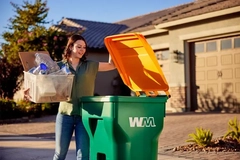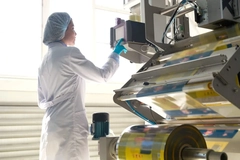Halloween candy danger: Expert issues warning over THC edibles in counterfeit packaging
On Halloween, US health experts are spreading awareness of the importance of taking the necessary safety precautions when purchasing and consuming snacks containing psychoactive cannabinoids, known as edibles. They urge parents to be particularly vigilant about edibles coming in packaging resembling that of popular children’s candies.
“There are tetrahydrocannabinol (THC) edible products that have been created to look like well-known snacks and treats. They use similar names, slogans and cartoon characters and can easily be confused with a regular snack,” Dr. Candice Foy of Stony Brook Children’s Hospital, New York, US, tells Nutrition Insight.
“I do not think that anyone is intentionally handing out THC products to children; however, whenever it is in the home, it puts children and others at risk for accidental ingestion,” she continues. “Part of prevention of accidental ingestions is safe cannabis edible practices.”
Accidental ingestion concerns
The pediatrician highlights that children may experience adverse side effects if they accidentally consume THC-infused edibles.
“Accidental ingestions by children can be harmless with minor drowsiness or dizziness. With larger doses, they can have more severe symptoms including altered behavior, abnormal movements or changes in breathing,” she details.
“It is not uncommon that these children may require emergency department care and even be hospitalized. Although rare, some children have even been required to be put on breathing machines.”
She further explains that THC affects children differently from most adults. “The less someone weighs, the more the same dose of THC will affect them. So children are at a much higher risk of toxicity given their size.”
“At this time, there have been no studies on the long-term effects of these accidental ingestions. We do know babies who are breastfed by a parent who ingests THC do have a risk of neurocognitive changes including ADHD or learning disabilities, so I would strongly recommend avoiding it.”
Prevention tips
On the occasion of Halloween, Foy calls on parents, guardians and caretakers to inspect children’s candy before they eat it. “Make sure the wrapper is correct and that it has not been tampered with.”
Illegal THC edibles have been made to look like well-known snacks and treats.“Teach your children to always (not just at Halloween time) have you look at what they are eating before they do it, as you never know what can be at a friend’s house and out of place. I do not think it is intentional to ever give cannabis edibles to children, but confusion can and has happened, so it is important to be proactive.”
She encourages guardians who purchase and consume edibles to store such products safely — “up, out of the way, and under lock and key.”
“Do not store it near other food products or where you would keep a snack,” she asserts. “Dangerous locations include kitchens, freezers, dressers, night table drawers and the glove compartment of the car.”
“Keep it high and out of reach, such as the top shelf of your bedroom closet. Keep it locked up by purchasing a safe or bag with a key or combination lock.”
Foy points out that many parents may not always be aware of accidental cannabis ingestion, and she advises them to monitor for symptoms such as drowsiness, dizziness, altered behavior, abnormal movements or changes in breathing.
“Parents are advised to seek medical evaluation if their child shows these symptoms and to contact the poison center for guidance on THC exposure.”
“All age groups are at risk. Even adults have also made the same mistake if they did not look at the wrapper carefully enough, given how well some of these edibles mimic the real thing.”
Illegal packaging practices
The expert explains that the cause of this concern is that “this packaging remains on the black market, even in the best-regulated states.”
“Many states have made it illegal to design THC products to be similar to a regular snack. Some regulations have included that there is an obvious label stating that it is a THC-containing product with the package dose,” says Foy.
 If ingested by children, larger THC doses can have symptoms including altered behavior, abnormal movements or changes in breathing.“Additionally, the packaging should be opaque, avoid using the word ‘candy’ or anything similar, the packaging cannot have bright colors or any cartoon characters and must be child resistant.”
If ingested by children, larger THC doses can have symptoms including altered behavior, abnormal movements or changes in breathing.“Additionally, the packaging should be opaque, avoid using the word ‘candy’ or anything similar, the packaging cannot have bright colors or any cartoon characters and must be child resistant.”
In order to mitigate risk and discourage black market use of such packaging, Foy encourages all consumers to buy responsibly. “Purchase edibles that are compliant with legal state standards for packaging from licensed businesses. These are opaque packages that are child resistant, without bright colors or cartoons.”
“If you are buying products that are packaged as look-alikes to common snacks and candies, you are part of this problem. Limit the dosage you have in the house to avoid large overdoses if consumed in one sitting.”
Foy explains that the brands that are most frequently mimicked change overtime, adding that “typically gummies and chocolates are easy to mistake regardless of what the brand says given that they are always wrapped and packaged the same.”
“Especially if there are clear windows in the packaging or pictures showing the sugar-covered candy inside.”












